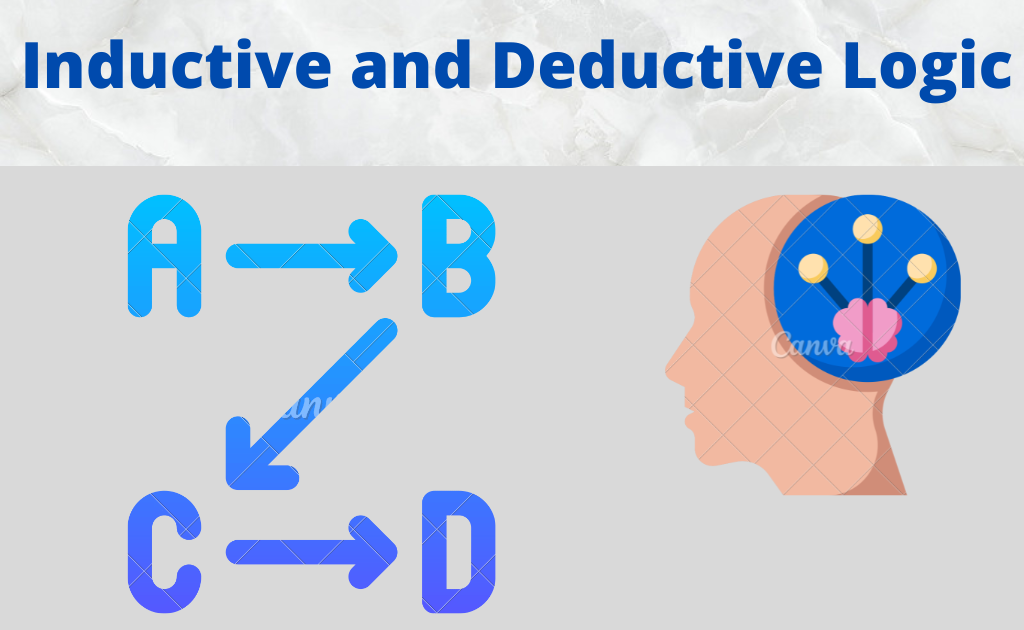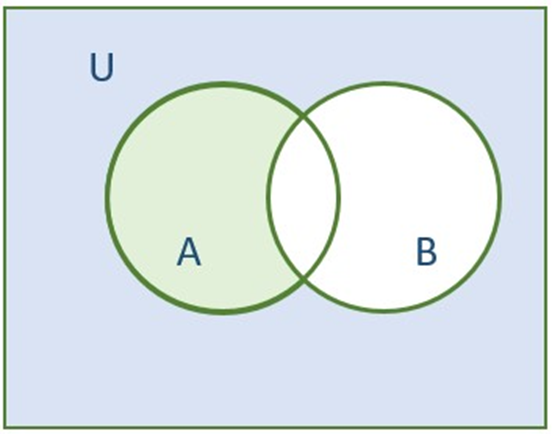Properties of sets
There are five properties of the set.
1. Commutative Property
AUB=BUA
A∩B= B∩A
Proof of Commutative Property under union
AUB=BUA
A= {a, b, c, d, e, f, g}, B = {f, g, h, I, j}
AUB = {a, b, c, d, e, f, g} U {f, g, h, I, j}
AUB= {a, b, c, d, e, f, g, h, I, j}
BUA= {e, f, h, I, j} U {a, b, c, d, e, f, g}
BUA = {a, b, c, d, e, f, g, h, I, j,}
Hence proved,
L.H.S = R.H.S
Proof of Commutative Property under intersection
A∩B=B∩A
A= {a, b, c, d, e, f, g}, B = {f, g, h, I, j}
A∩B = {a, b, c, d, e, f, g} ∩ {f, g, h, I, j}
A∩B= {f, g}
B∩A= {e, f, h, I, j} ∩ {a, b, c, d, e, f, g}
B∩A = {f, g}
Hence proved,
L.H.S = R.H.S
Also read related articles
Introduction to operation of set
2. Associative Property
(AUB)UC= AU(BUC)
(A∩B)∩C= A∩(B∩C)
Proof of Associative Property under union
(AUB)UC= AU(BUC)
A = {1, 2, 3, 4, 5, 6, 7, 8, 9, 10}, B= {2, 4, 6, 8, 10}, C= {1, 3, 5, 7, 9, 11}
AUB = {1, 2, 3, 4, 5, 6, 7, 8, 9, 10} U {2, 4, 6, 8, 10}
AUB= {1, 2, 3, 4, 5, 6, 7, 8, 9, 10}
(AUB)UC = {1, 2, 3, 4, 5, 6, 7, 8, 9, 10}
U {1, 3, 5, 7, 9, 11}
(AUB)UC {1, 2, 3, 4, 5, 6, 7, 8, 9, 10, 11}
AU(BUC)
BUC= {2, 4, 6, 8, 10} U {1, 3, 5, 7, 9, 11}
BUC= {1, 2, 3, 4, 5, 6, 7, 8, 9, 10, 11}
AU(BUC) = {1, 2, 3, 4, 5, 6, 7, 8, 9, 10} U {1, 2, 3, 4, 5, 6, 7, 8, 9, 10, 11}
AU(BUC) = {1, 2, 3, 4, 5, 6, 7, 8, 9, 10, 11}
Hence proved,
L.H.S=R.H.S
Proof ssociative Property under Intersection
(A∩B)∩C=A∩(B∩C)
A = {1, 2, 3, 4, 5, 6, 7, 8, 9, 10}, B= {2, 4, 6, 8, 10}, C= {1, 3, 5, 7, 9, 11}
A∩B = {1, 2, 3, 4, 5, 6, 7, 8, 9, 10} ∩ {2, 4, 6, 8, 10}
A∩B= {2, 4, 6, 8, 10}
(A∩B) ∩C= {2, 4, 6, 8, 10} ∩ {1, 3, 5, 7, 9, 11}
(A∩B) ∩C = { }
A∩ (B∩C)
(B∩C) = {2, 4, 6, 8, 10} ∩ {1, 3, 5, 7, 9, 11}
B∩C= { }
A∩(B∩C) = {1, 2, 3, 4, 5, 6, 7, 8, 9, 10}∩{ }
A∩(B∩C) = { }
Hence proved
L.H.S = R.H.S
3. Law of identity element ∅ is the identity of U
AU∅= A
Proof of Law of identity element, ∅ is the identity of U
AU∅= A
A= {2, 4, 6, 8}, { }
AU∅ = {2, 4, 6, 8} U { }
AU∅ = {2, 4, 6, 8}
Hence proved,
L.H.S = R.H.S
4. Idempotent Law
AUA= A
Proof of Idempotent Law
AUA= A
Proof,
A= {1, 2, 3, 4, 5, 6, 7, 8, 9, 10}
AUA= {1, 2, 3, 4, 5, 6, 7, 8, 9, 10} U {1, 2, 3, 4, 5, 6, 7, 8, 9, 10}
AUA= {1, 2, 3, 4, 5, 6, 7, 8, 9, 10}
Hence proved,
L.H.S= R.H.S
5. Law of U
Proof of Law of U
UUA= U
Proof,
U= {0, 1, 2, 3, 4, 5, 6, 7, 8, 9, 10}, A= {1, 2, 3, 4, 5, 6, 7, 8, 9, 10}
UUA= {0, 1, 2, 3, 4, 5, 6, 7, 8, 9, 10} U {1, 2, 3, 4, 5, 6, 7, 8, 9, 10}
UUA = {0, 1, 2, 3, 4, 5, 6, 7, 8, 9, 10}
Hence proved,
L.H.S=R.H.S
Frequently Asked Question-FAQs
What Are Properties Of Sets In Algebra?
There are several properties of sets which help to make various operations across sets possible. These properties of sets are similar to the properties of real numbers, and include the commutative property, associative property, and distributive property. The properties of sets are useful in performing operations such as union, intersection, and complement of a set. The three most important properties of sets are as follows.
Commutative Property: A U B = B U A
Associative Property: (A ∩ B) ∩ C = A ∩ (B ∩ C)
Distributive Property: A U (B ∩ C) = (A U B) ∩ (A U C)
What Is The Use Of Properties Of Sets?
The properties of sets are useful in many ways. The operations of union, intersection, complement can be conveniently performed using these properties.
Mention the distributive property of Sets.
For all sets A, B and C , A∩(B⋃C) = (A∩B)⋃(A∩C) and A∪(B∩C)=(A∪B)∩(A∪C).
Does union of Sets satisfy commutative property?
Yes. Union of sets satisfies the commutative property. A⋃B = B⋃A.
Define a Set in Mathematics.
A set is a collection of well-defined distinct objects, For example, {2, 4, 6, 8} is the set of all even numbers less than 10.

 written by
written by 




Leave a Reply